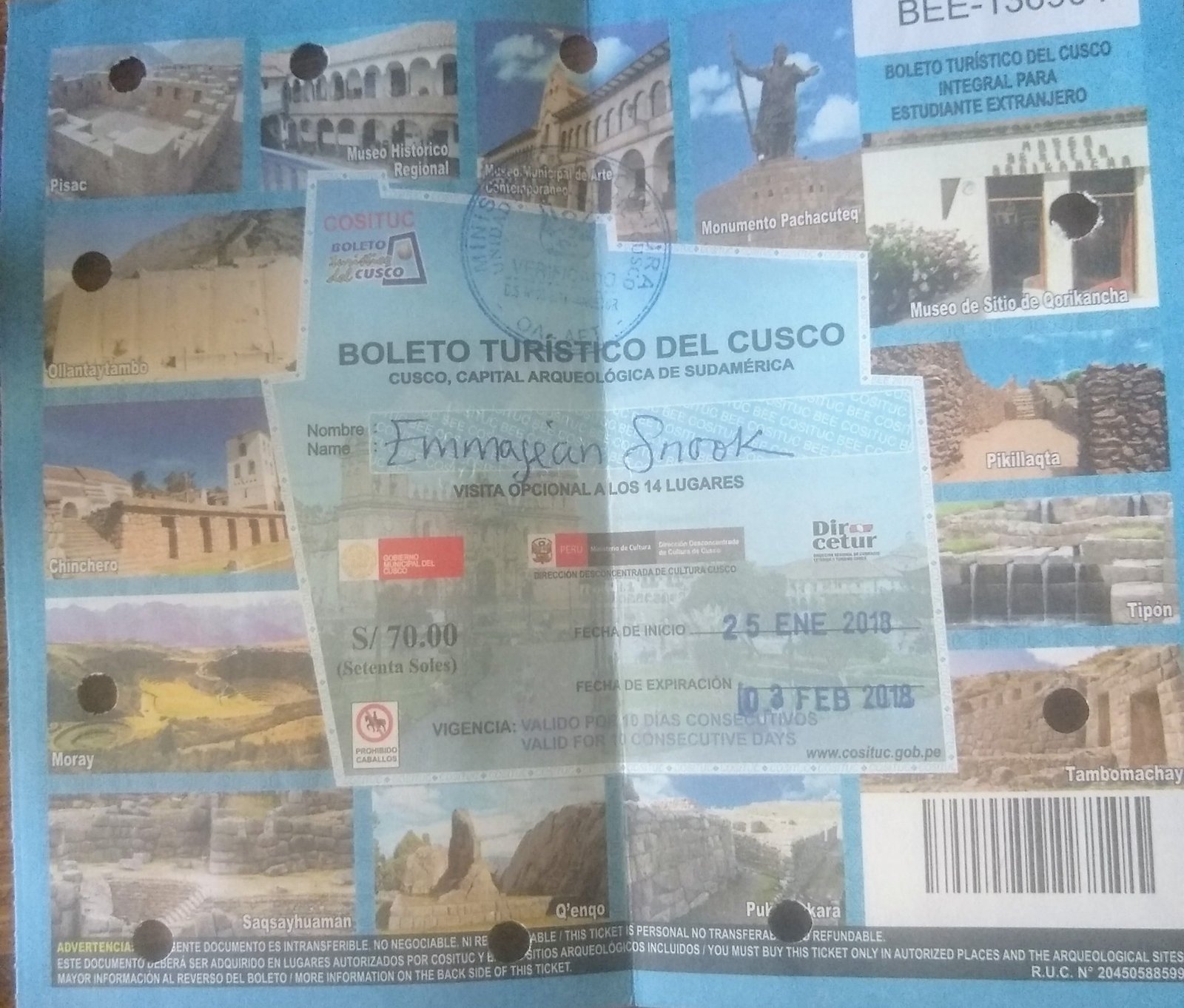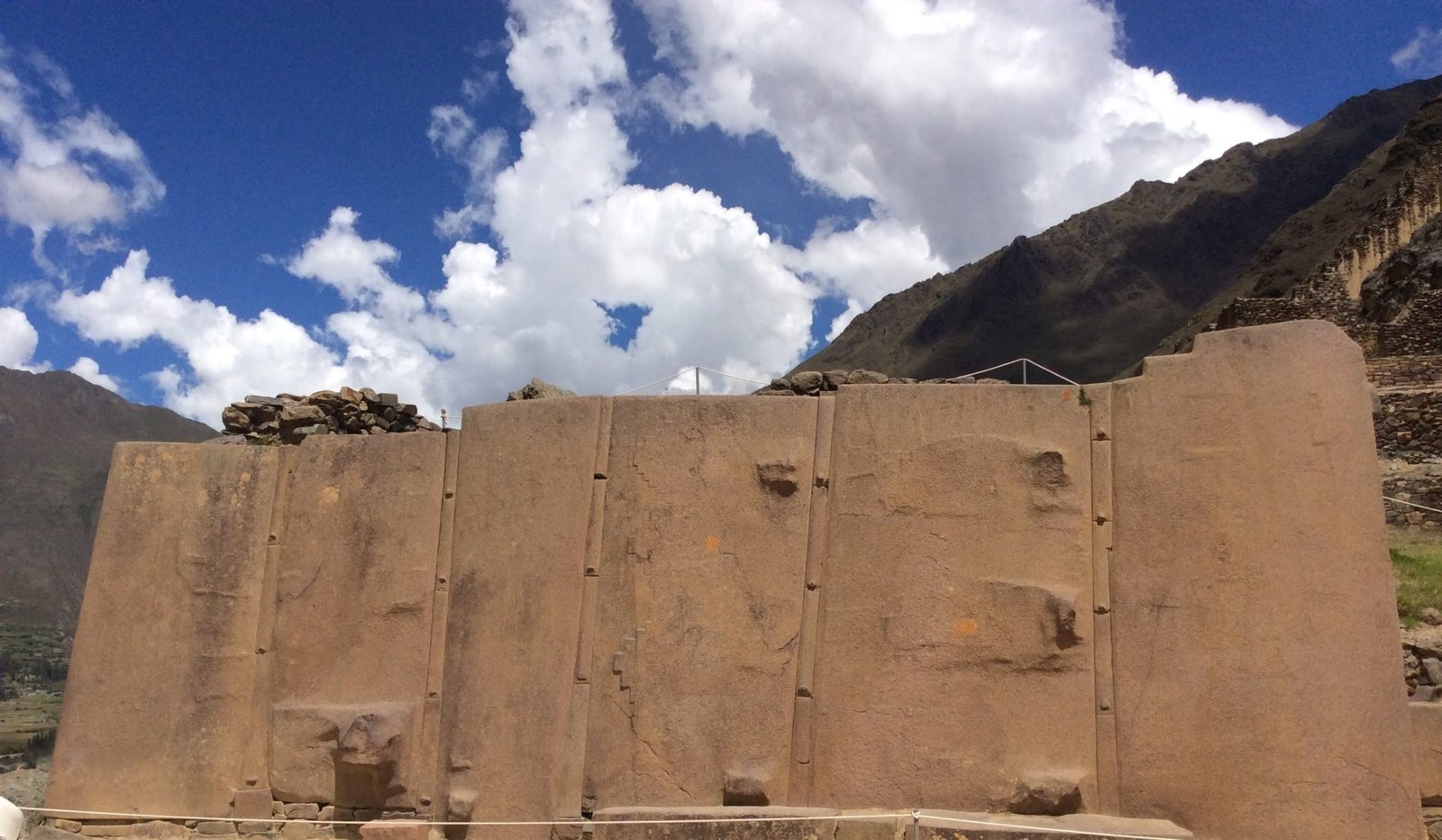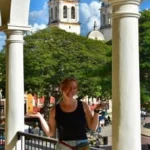Planning to check out Ollantaytambo and want to know about the main ruins located there within the Sacred Valley?
First off, I recommend that you stay in Ollanta for more than just 1-3 days. Ollantaytambo has some delicious food and drink options, a multitude of free hikes (!!!!), and an interesting culture and history. It's also a great place to relax, soak in excellent views, and just live in the present. There's an excellent Workaway program available there at the ChocoMuseo - Ollantaytambo (if you're not sure about Workaway, read my review).
However, I recognize that the main draw of coming to Ollanta is, of course, the ruins there that are a part of the Sacred Valley's boleto turistico. So, here's a nice lay down of the Ollantaytambo ruins to give you some more information.

Part of the Ollantaytambo ruins, located in the lower sector
History of the Ollantaytambo Ruins
Ollantaytambo is the only Incan town that is still occupied. It wasn’t conquered by the Incans until the 15thcentury by Inca Pachacutec, who rebuilt the town, installed aqueducts (which are still used), and started building the Temple of the Sun. Ollantaytambo became known as being a home to Incan nobility.
The most well-known tale about Ollanta and the Incan empire is Inca Manco’s successful resistance against the Spanish invaders. In 1532, Pizarro had already executed Atahuallpa, the last Incan ruler (although a half-blood). However, resistance to the Spaniards was still running strong, and in 1537 Inca Manco retreated to Ollanta. He retreated to high ground (where the main Incan ruins are and the uncompleted Temple of the Sun is located). He held the Spanish invaders back and flooded the plains region, driving back the Spanish forces. Afterwards, Inca Manco retreated to Vilcabamba in the jungle and the Spanish then captured Ollantaytambo.
What is the Boleto Turístico?

The boleto turistico, needed for entry into the main ruins in Ollantaytambo
The boleto turistico is a ticket that gets you admitted into 10 different Incan ruins, 4 museums, and 1 statue.
The admission with the boleto turistico is 70 soles for students and 130 soles for adults. To qualify as a student, you must have a student ID and be 25 years of age or younger. You can buy this ticket at any of the ruins that are included in it, and Ramone and I bought both of ours directly at Ollantaytambo. There's also an office you can buy them at in Cusco.
Plan for 1 Full Day of Exploration
I would plan at least a half day for the Ollantaytambo ruins, but probably more of a full day. The ruins of Ollantaytambo are quite large, and we took our time going through the different sections. The initial steps up the terraces are moderately difficult, but these ruins are probably the least arduous out of all the hiking options here in Ollanta. If you’re feeling extra naughty, there is a way to get into the ruins by going through the cornfields, but there are usually guards and they’ll probably spot you. Most will let you in if you pay a bribe, but usually the bribe isn’t cheap enough to make sense, so just buy the ticket and support the upkeep of these beautiful historical sites.
The Layout of the Ollantaytambo Ruins
The main ruins in Ollantaytambo are located at the end of the main road into Ollantaytambo. There’s only one main road in and out, and the ruins are built up high on terraces on the hill Bandolista so they’re impossible to miss. The terraces themselves are called Pumatallis. The main entryway into the Ollantaytambo ruins leads you straight up these terraces, to where you can then split off to view different sectors of the ruins.
The Temple Sector

The Wall of the Six Monoliths
Perhaps the most well-known part of Ollantaytambo, the Temple sector features the unfinished Sun Temple, which includes the impressive Wall of the Six Monoliths. This wall has huge polished stones that weight over 50 tons each. Also located within the Temple sector is the Enclosure of the Ten Niches.
The Middle Sector

The Middle sector mainly just boasts some terrific views of Ollantaytambo (you don’t realize how far up you are until you look down), as well as some building structures. There isn’t one specific well-known structure in this section, but the stonework is of course still impressive.
The Lower Ceremonial Sector

A taste of what you can see in the lower sector of the Ollantaytambo ruins
As you make your way down the terraces that are off to the side (not the main terraces), the lower sector has a lot of different fountains, including the Baño de la Ñusta. The Patakancha River runs alongside this area, and supplies the fountains with their water source.
Further Reading:
If you're interested in Incan architecture, Jean-Pierre Protzen, a professor at the University of California at Berkeley, has published multiple books and articles about Incan architecture, and also specifically about Ollantaytambo. His article Inca Quarrying and Stonecutting can be found for free online. If you’re lucky enough to have a JSTOR subscription, he has multiple other articles available there as well.
Additionally, he published a book entitled Inca Architecture and Construction at Ollantaytambo. If you’re an architecture nerd, he’s a good option for learning more.
Liked this post? Pin it!

Subscribe to receive Snook Outta Water's monthly newsletter with exclusive updates and content.



Pingback:An Introductory Guide to Ollantaytambo, Peru - Snook Outta Water